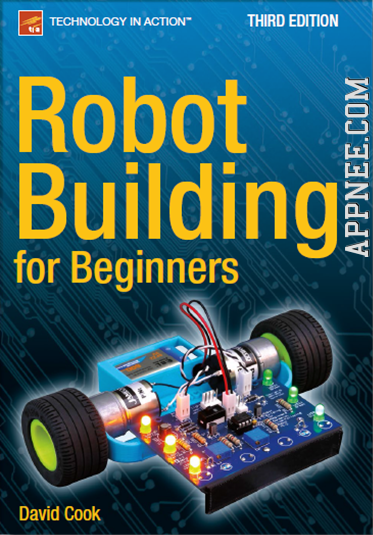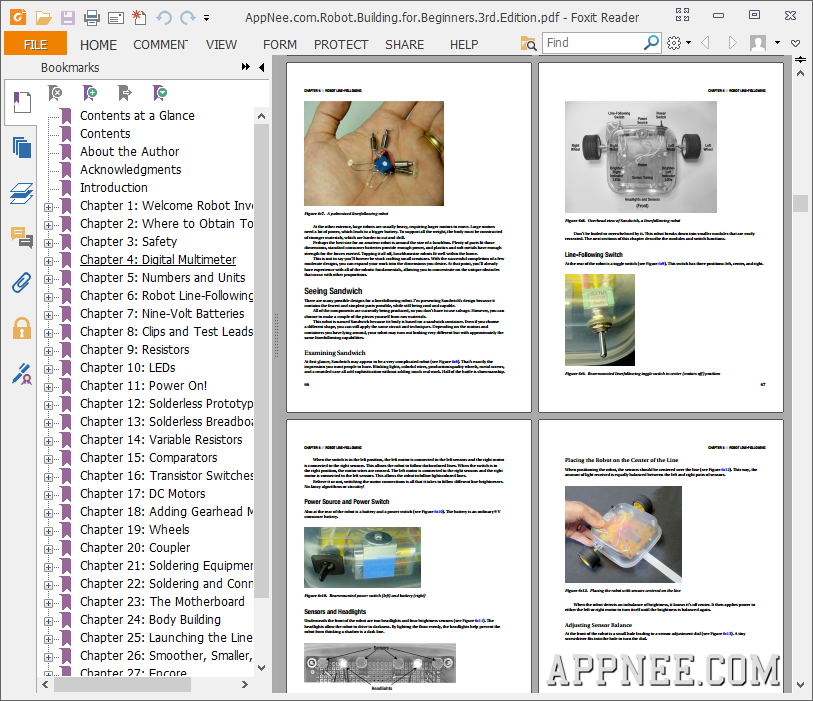
Through self-study to master robotics is definitely not an easy thing, thanks to this exciting book Robot Building for Beginners provides the fundamental and practical knowledge for readers who are ready to start for amateur robot making. It can not only help readers to understand the various components and parts used in the development of robot, also provides the essential technology for independent creations.
Robot Building for Beginners tells you the whole production process of DIY robots from the view point of an amateur, meticulous and easy to understand. It includes use of professional tools, purchase on selection of components, control circuit production, making of robots shell, run and debug, etc.
Because the author David Cook's own electronics and basic mechanics knowledge are self-taught, he can use simple language to describe his years of robot production experience clearly and in detail. In that way, it won't let a beginner feel the fear of difficulties due to the too strong academic meaning.
In short, Robot Building for Beginners will teach you to make a simple robot from scratch, that doesn't need any foundation, as long as you are interested, you can start with this book. AppNee provides you the Robot Building for Beginners, Second Edition & Third Edition in HD PDF format.

Table Of Contents
for Second Edition:- Welcome Robot Inventor!
- Where to Obtain Tools and Parts
- Safety
- Digital Multimeter
- Numbers and Units
- Robot Line-Following
- Nine-Volt Batteries
- Clips and Test Leads
- Resistors
- LEDs
- Power On!
- Solderless Prototyping
- Solderless Breadboard Setup
- Variable Resistors
- Comparators
- Transistor Switches
- DC Motors
- Adding Gearhead Motors
- Wheels
- Coupler
- Soldering Equipment
- Soldering and Connecting
- The Motherboard
- Body Building
- Launching the Line-Follower
- Encore
- Appendix
- Chapter 1. Welcome Robot Inventor!
- Chapter 2. Where to Obtain Tools and Parts
- Chapter 3. Safety
- Chapter 4. Digital Multimeter
- Chapter 5. Numbers and Units
- Chapter 6. Robot Line-Following
- Chapter 7. Nine-Volt Batteries
- Chapter 8. Clips and Test Leads
- Chapter 9. Resistors
- Chapter 10. LEDs
- Chapter 11. Power On!
- Chapter 12. Solderless Prototyping
- Chapter 13. Solderless Breadboard Setup
- Chapter 14. Variable Resistors
- Chapter 15. Comparator
- Chapter 16. Transistor Switches
- Chapter 17. DC Motors
- Chapter 18. Adding Gearhead Motors
- Chapter 19. Wheels
- Chapter 20. Coupler
- Chapter 21. Soldering Equipment
- Chapter 22. Soldering and Connecting
- Chapter 23. The Motherboard
- Chapter 24. Body Building
- Chapter 25. Launching the Line-Follower
- Chapter 26. Smoother, Smaller, Cheaper
- Chapter 27. Encore
- Appendix A: Leftovers
- Appendix B: 3D Printing
Book Example Codes
Download URLs
| Version | Download | Size |
| Third Edition |  |
20.0 MB |
| Second Edition |  |
19.8 MB |